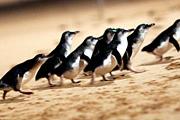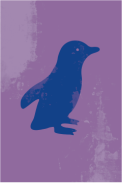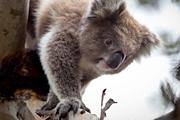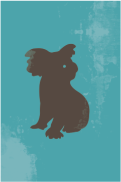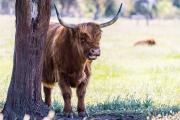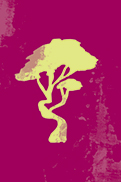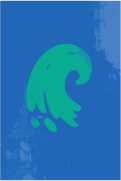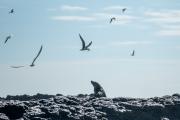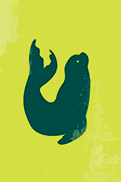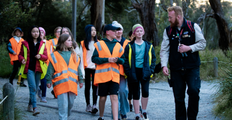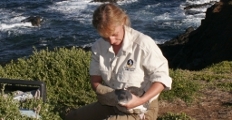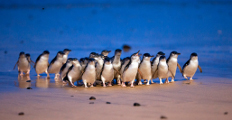The Surf Beach Sunderland Bay Biodiversity Project aims to protect and assist the natural recovery of native ground flora, restore biodiversity values, and alleviate coastal erosion issues in this coastal reserve. The construction of a rabbit exclusion fence in conjunction with a rabbit control program and targeted revegetation/restoration will protect significant coastal vegetation and cultural heritage from the impacts of rabbits.
This project is a resident-led initiative, with the support of Surf Beach Sunderland Bay Coastcare Group, Bass Coast Shire Council, Bass Coast Landcare Network, Bunurong Land Council Aboriginal Corporation and Phillip Island Nature Parks.
WHERE
The Rabbit Exclusion Fence will protect approximately 3 hectares of coastal vegetation from Surfies Point Carpark to the end of Sunderland Bay Rd steps.
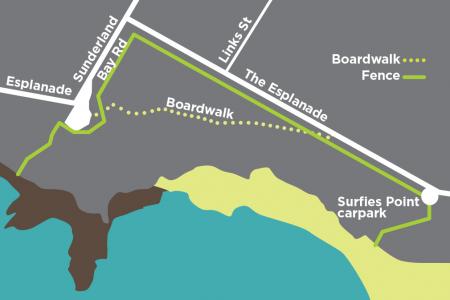
IMPACT FROM RABBITS
Rabbits have been identified as the primary cause in the decline of coastal flora in the Surf Beach Sunderland Bay Coastal Reserve. Heavy grazing by rabbits has severely depleted herbaceous groundcover and without improved protection we may lose the biodiversity in the area, and it may lead to localised extinctions.
A trial of rabbit exclusion cages indicated that coastal ground species can respond and recover when the pressure of heavy rabbit grazing is removed.
The subsequent installation of a rabbit exclusion fence removed the principal threatening process and further protected and enhanced the remnant coastal vegetation.
FACTS ABOUT RABBITS
- They have extremely high reproduction rates.
- They are reproductively viable at 3 months old and can become pregnant 1-2 hours after giving birth to a litter. Litter sizes vary from 4-8 kits.
- They require an underground warren system to reproduce successfully. This fact highlights the importance of warren destruction to halt reproduction and population growth.
- More than one rabbit/hectare is enough to decrease natural recruitment of native vegetation.
PROGRAM RESULTS
- Extensive warren mapping has taken place within the rabbit exclusion fence, and no active warrens have been located.
- Regular fence checks and maintenance have ensured no new rabbit incursions have occurred.
- Regular monitoring indicates a reduction in the rabbit population within the fenced area.
- Rabbit baiting under exclusion cages has achieved a significant reduction in rabbit abundance over the past 12 months.
- Surveys indicate between 60-90% reduction in rabbit dung prevalence and up to 92% reduction in rabbit excavations.
- Bait has been consistently consumed by rabbits, indicated from camera footage and green rabbit droppings observed around bait stations.
MINIMISING IMPACTS ON WILDLIFE
The following activities were undertaken as part of the project to minimise the impact on wildlife such as wallabies and echidnas.
- A free-feed phase for rabbits will be undertaken prior to laying Pindone. This will allow rabbits to get used to eating the baits.
- Cameras will be installed near the exclusion cages to monitor the baits and determine which species are eating them.
- Baits will be laid under exclusion cages which will prevent local wildlife accessing the bait.
- Baits are dyed green to reduce the likelihood of uptake by birds which usually seek out ripe seeds or fruit.
- Pindone is applied to the husk of the oats which is usually removed by birds.
- Echidnas are not at risk as they eat insects and worms.
- Pindone is quickly metabolised by rabbits.
- Birds of prey would need to eat a significant number of dead rabbits to be affected. Dead rabbits will be removed and disposed of to reduce this risk.
- Dogs should remain on lead at all times and be kept on the boardwalk.
- Pindone has an effective antidote if secondary poisoning should occur.
WALLABY AND ECHIDNA ACCESS
We want native animals such as echidnas and wallabies to be able to move in and out of the fenced area as their browsing keeps the vegetation more open and is beneficial for the ground flora. There were six 'echidna gates' installed along the fence which are specially designed to allow echidnas to move through but are too difficult for a rabbit to push through.
Echidnas have been captured on camera using the specially designed echidna gates and are regularly observed within the fence line. Wallaby activity within and outside of the fence line has been regularly monitored with no negative impacts observed.
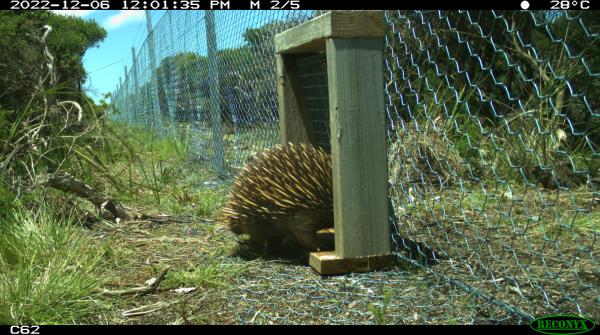
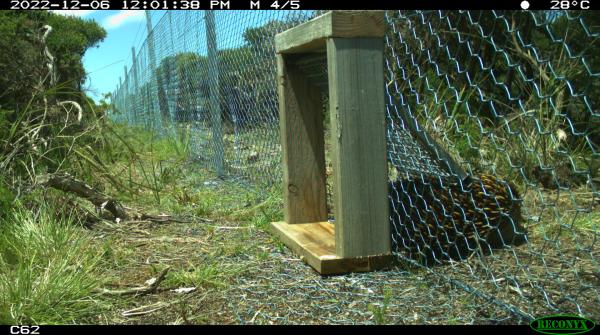
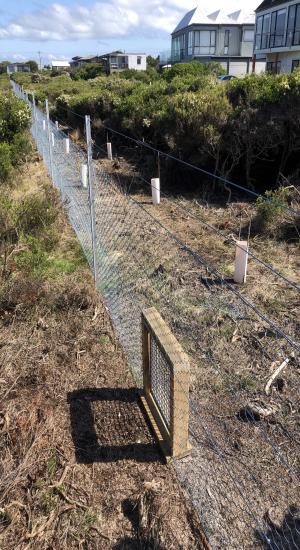
FLORA MONITORING
Following the rabbit exclusion fence's construction, a flora survey was done to capture baseline data of species diversity and abundance. To support a measure of change over time, the project plan is to monitor the site at one, four and ten-year intervals after the installation of the fence.
A follow-up survey was undertaken in October 2023 and healthy natural regeneration has occurred with species such as pale fruit ballart (Exocarpus stricta) and the prostrate form of Hop goodenia (Goodenia ovata) regenerating since rabbit control has been undertaken.
Also of significance is the germination of Trigger plant (Stylidium spp) seedling being recorded inside the enclosure. While the first-year results are promising, it is still too early to draw any further conclusions at this stage.
HOW CAN YOU HELP
You can Volunteer with the Surf Beach Sunderland Bay Coastcare Group, contact Gayle Seddon - Coordinator, Surf Beach Sunderland Bay Coastcare Group
By email
Or through socials
You can get involved in other conservation-based Volunteering with Nature Parks, for more information click here.
You can help to restore natural biodiversity and help protect wildlife by keeping your dog on a lead and remaining on formal boardwalks while in this area.
If you see injured wildlife, please call Wildlife VIC 24/7 hotline on 03 8400 7300.
RABBIT FREE PHILLIP ISLAND
Rabbit Free Phillip Island is a local initiative driven by local volunteers in collaboration with several organisations and agencies.
Aiming to ‘inspire, engage, educate and facilitate community action’ the Surf Beach Sunderland Bay Coastcare Group together with Phillip Island Landcare has been working together to support the local community to reduce rabbit numbers.
A range of initiatives support the Biodiversity Project including:
- rabbit proofing homes will be a ‘first line of defence’, offering advice and training (warren fumigation and rabbit proof fencing) to homeowners, aiming to eliminate the major refuge enjoyed by rabbits. With support from the Ross Trust and Bass Coast Landcare Network the “Teaming Up to Tackle Rabbits” program provides residents the opportunity to rabbit-proof their homes.
- promoting citizen science in the form of warren mapping and understanding rabbit abundance and behaviour (use of a warren smoker and recording data using RabbitScan)
- vegetation monitoring through a combination of vegetation quality mapping, photo points, citizen science and quadrat data analysis, to help assess the effectiveness of the program.
- weed control and erosion control, seed collection and revegetation.
FOR MORE INFORMATION PLEASE CONTACT Bass Coast Landcare Network 0456 390 423.
Rabbit-Proof Your Home and Garden from Bass Coast Landcare Network on Vimeo.





